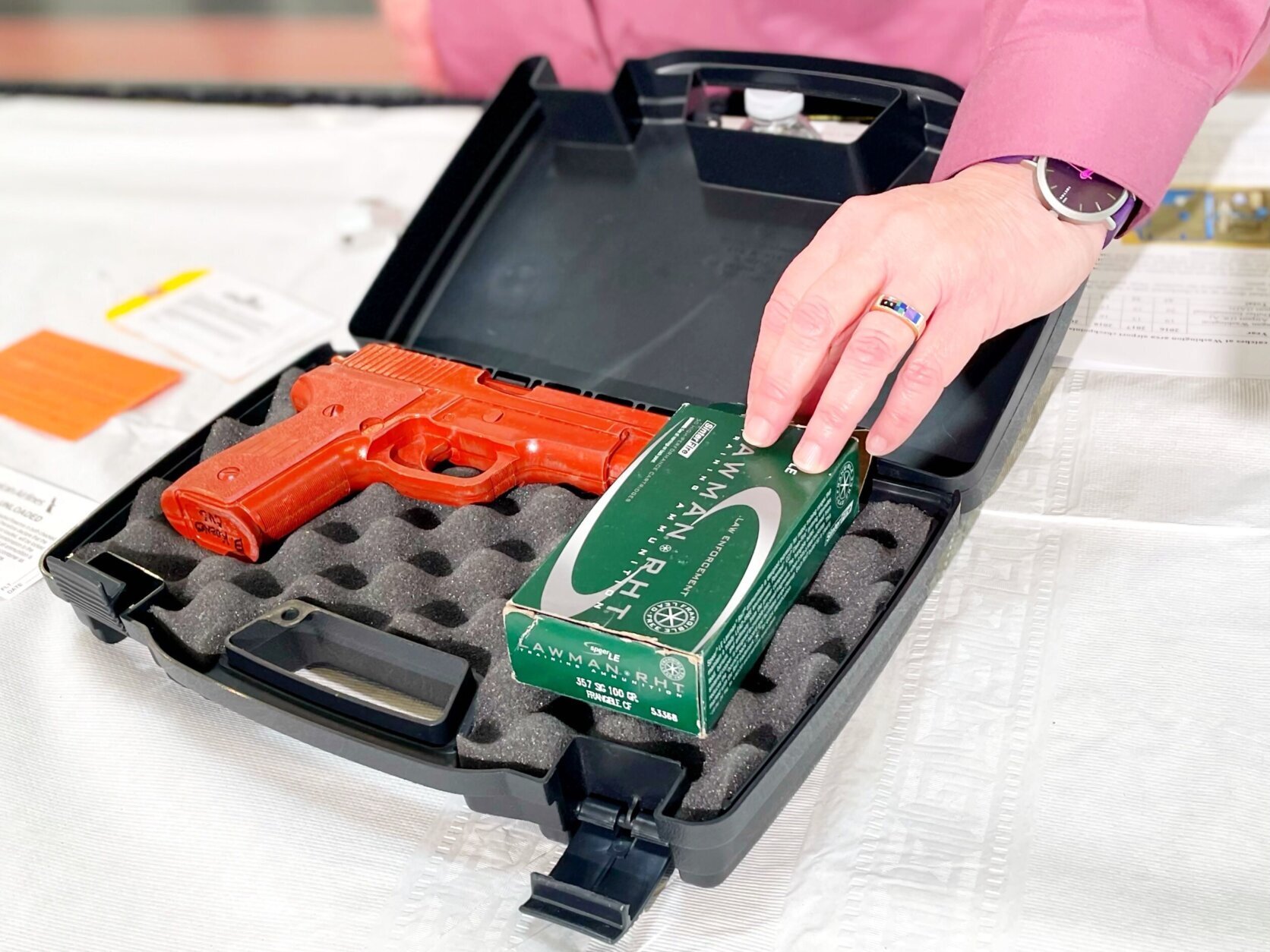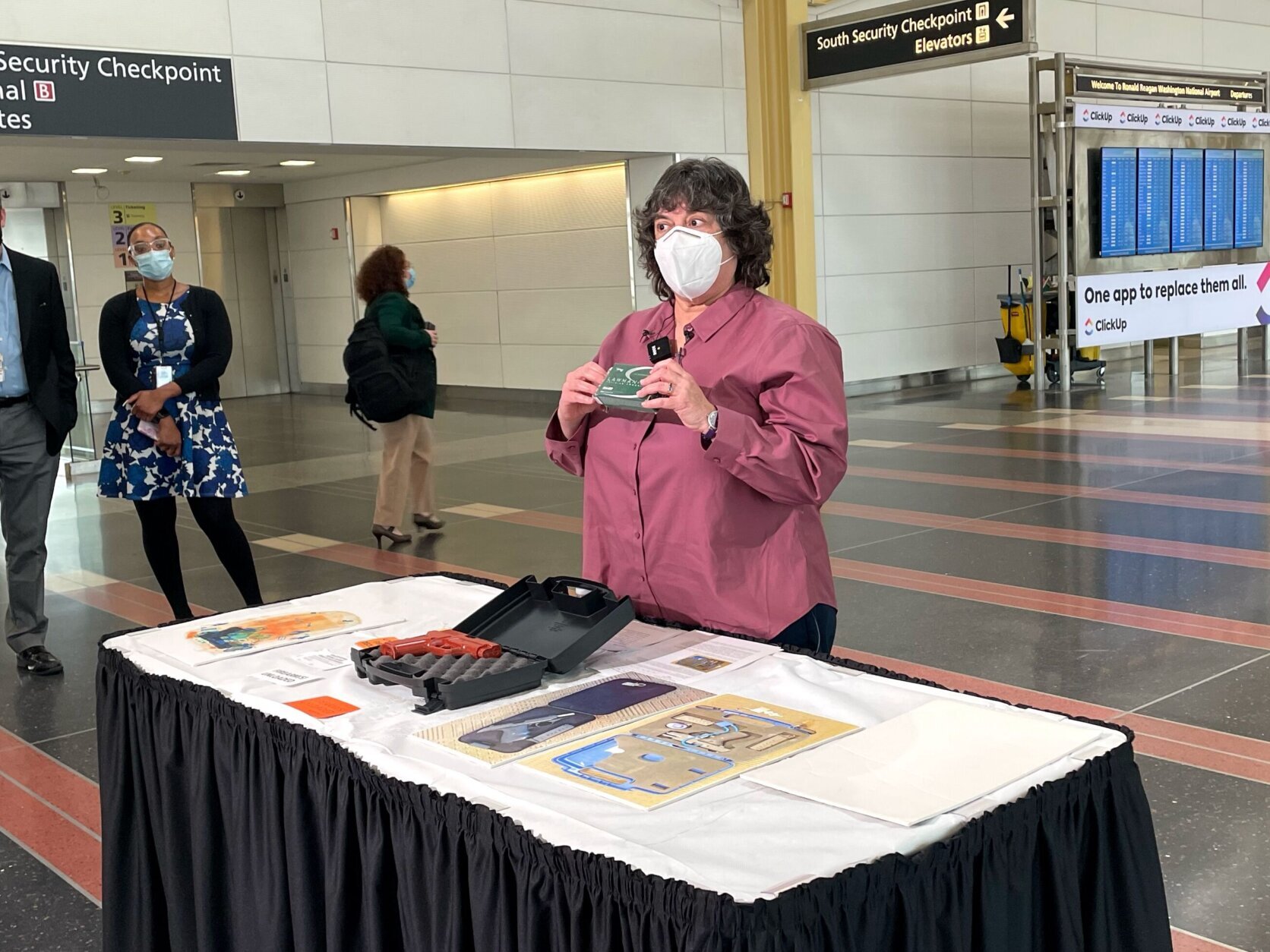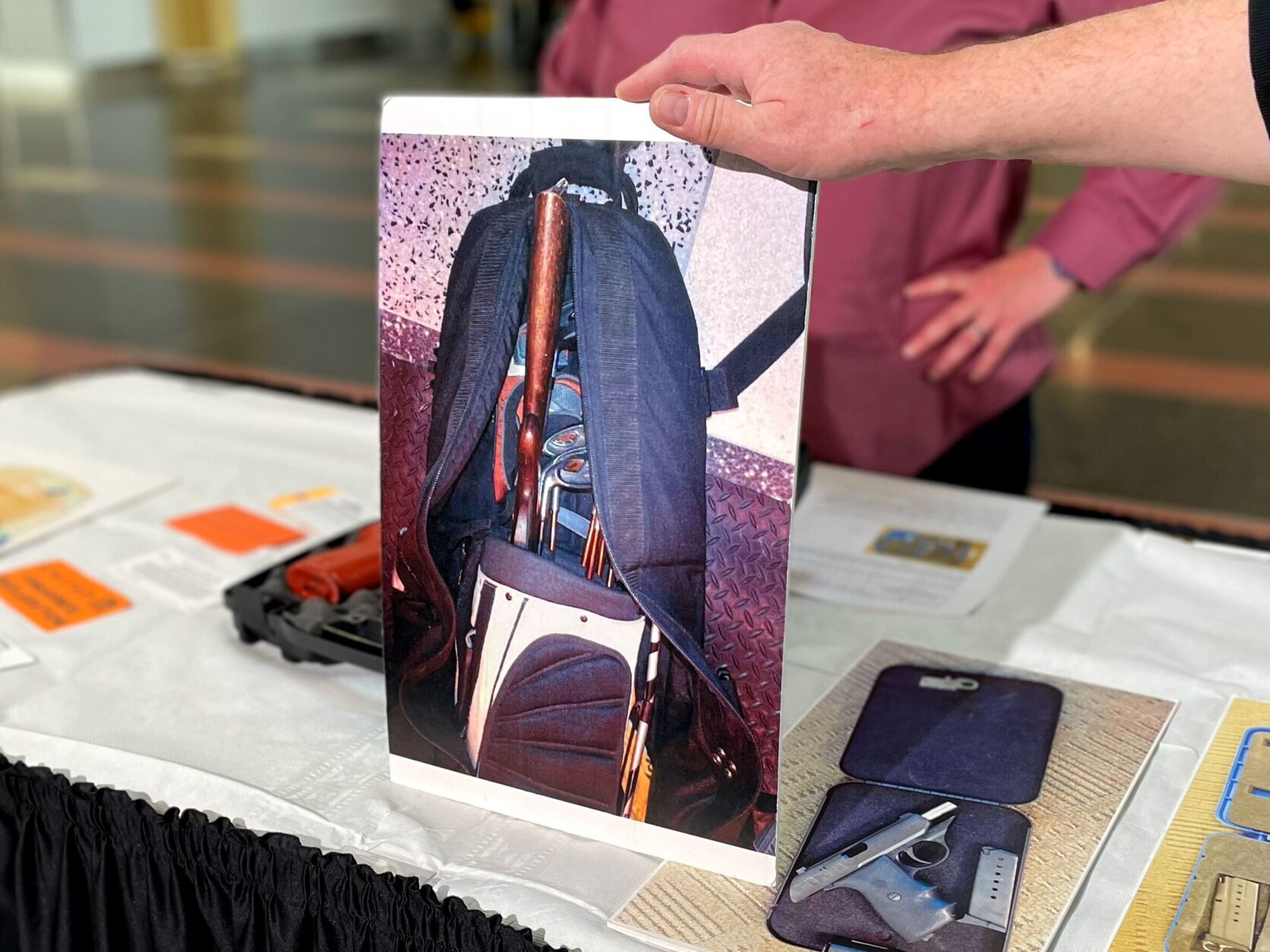Demonstrating how firearms can be safely and legally transported on aircraft, Farbstein placed a handgun replica in a padded hard-shell case, saying ammunition should be packed in the same case.
“Even if you only have three rounds left, keep it in the original box, put it right there [next to the weapon], then you close it, lock it, and then you take it to the check-in counter. Do not take this to the checkpoint.”
At the check-in counter, the passenger will fill out a small amount of paperwork, declaring the firearm.
After declaring the gun, small gun cases can generally be placed in checked baggage, or transported in the belly of the plane, Farbstein said.
Farbstein held up a photo of hunting rifle, stuffed into a golf bag.
“This is not the way to pack your rifle for a vacation,” Farbstein said.
A long weapon should be placed — with ammunition in its original box — in an appropriately sized hard gun case.
Carrying a weapon to an airport checkpoint can be an expensive, inconvenient mistake.
“If the TSA agent sees it on the X-ray monitor, what they do is shut down the conveyor belt,” Farbstein said. A police officer will be summoned, and remove the checked bag from the conveyer belt.
Passengers waiting to be screened would likely be moved to another lane, while police safely remove the weapon from the carry-on.
Local law enforcement will determine whether criminal charges should be filed, depending on jurisdictions.
As for TSA: “They’ll issue a federal civil citation, and that can run into thousands of dollars,” said Farbstein.
If the traveler with a gun is a member of the TSA PreCheck screening program, they’ll lose the privilege.
”TSA is very happy to make sure your firearm gets transported to your destination,” Farbstein said.
“All we really ask is that you pack it the right way.”











